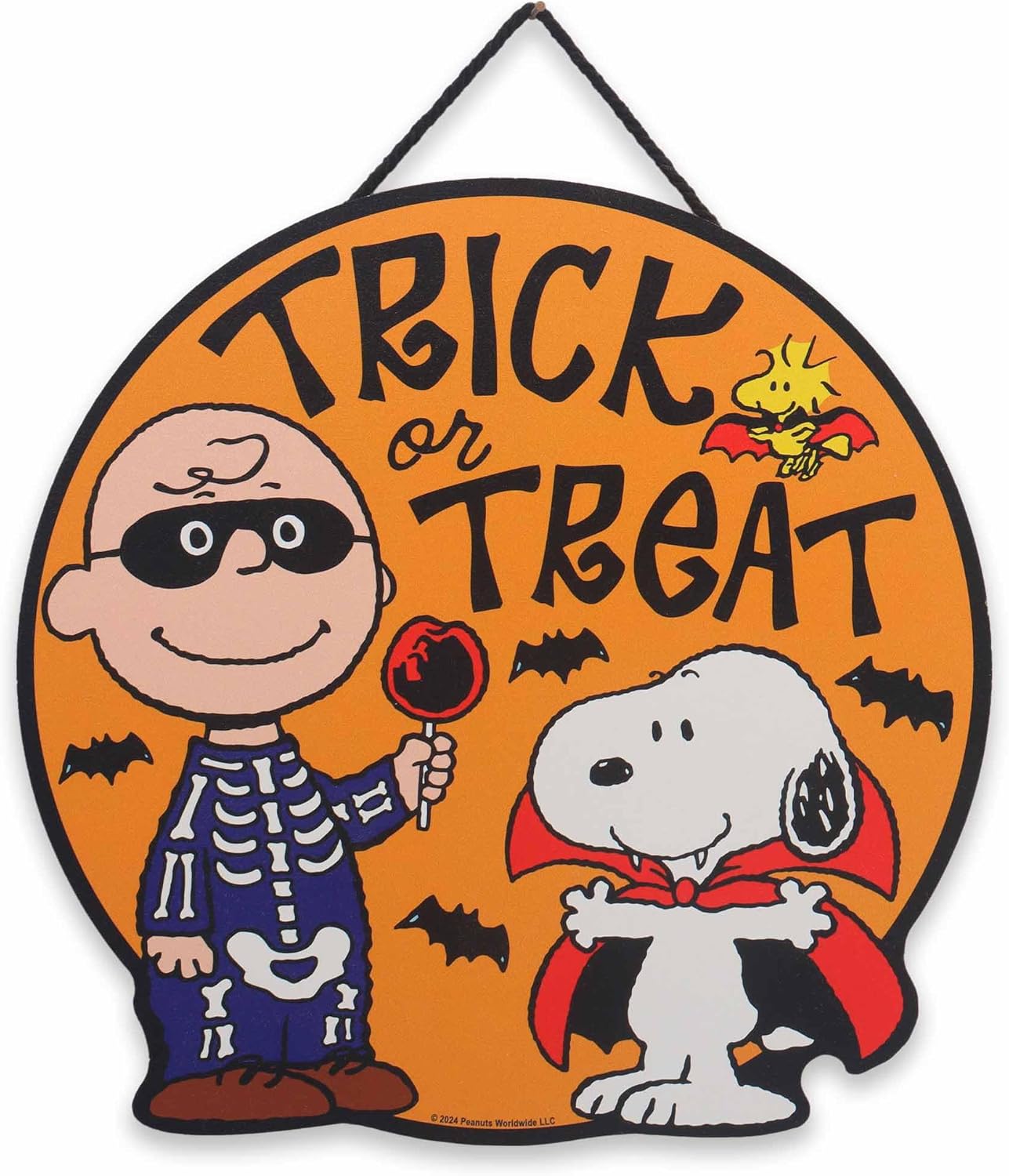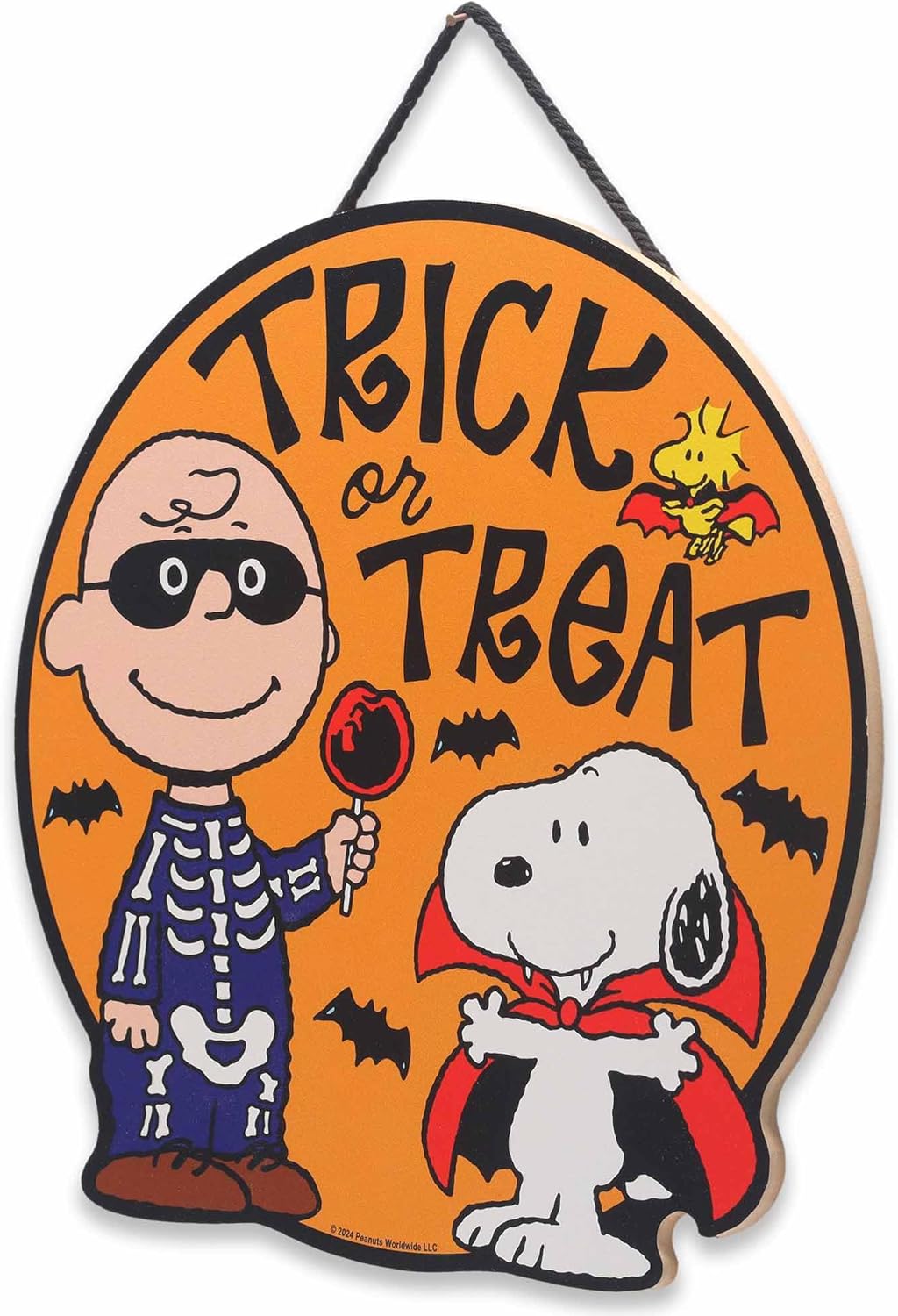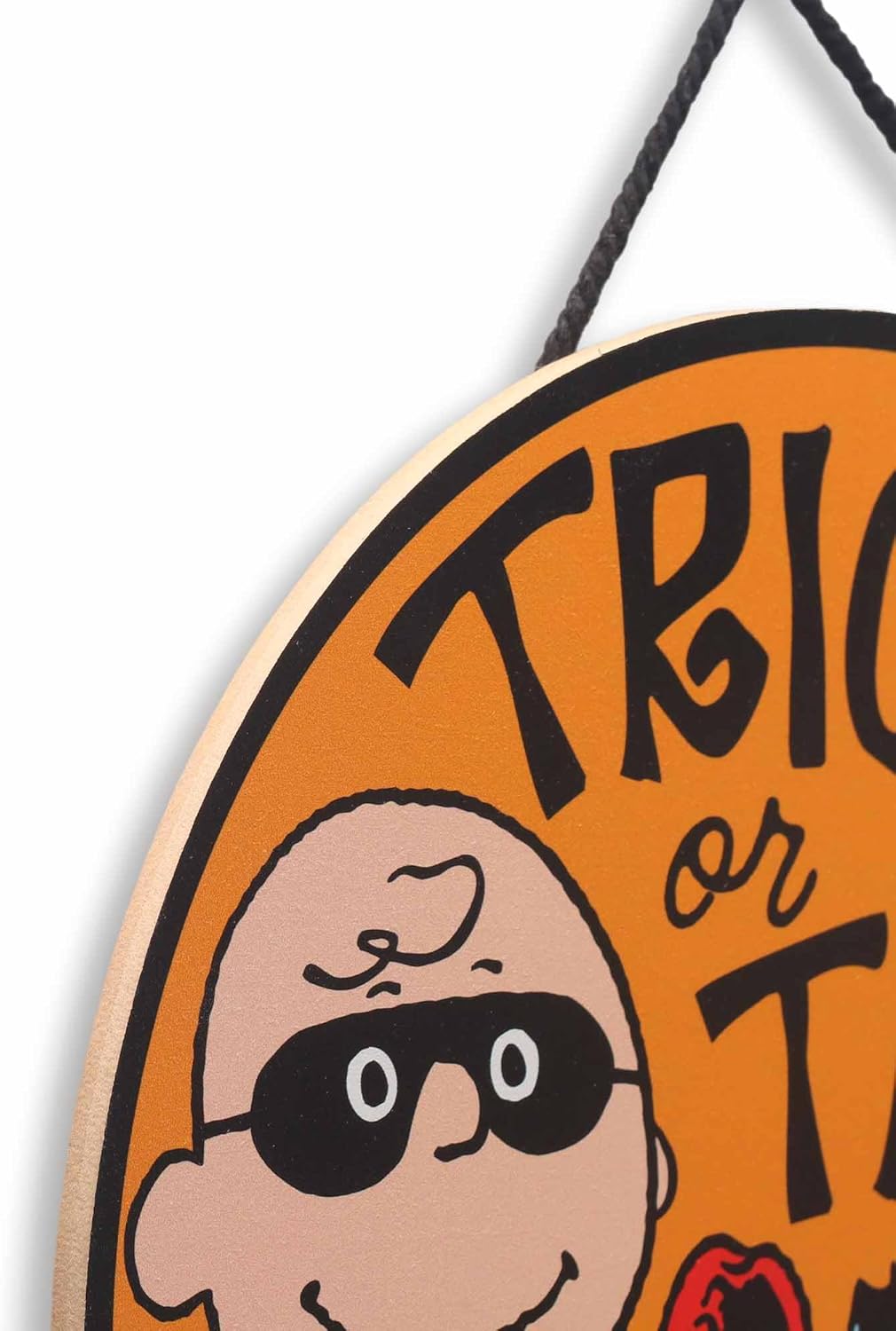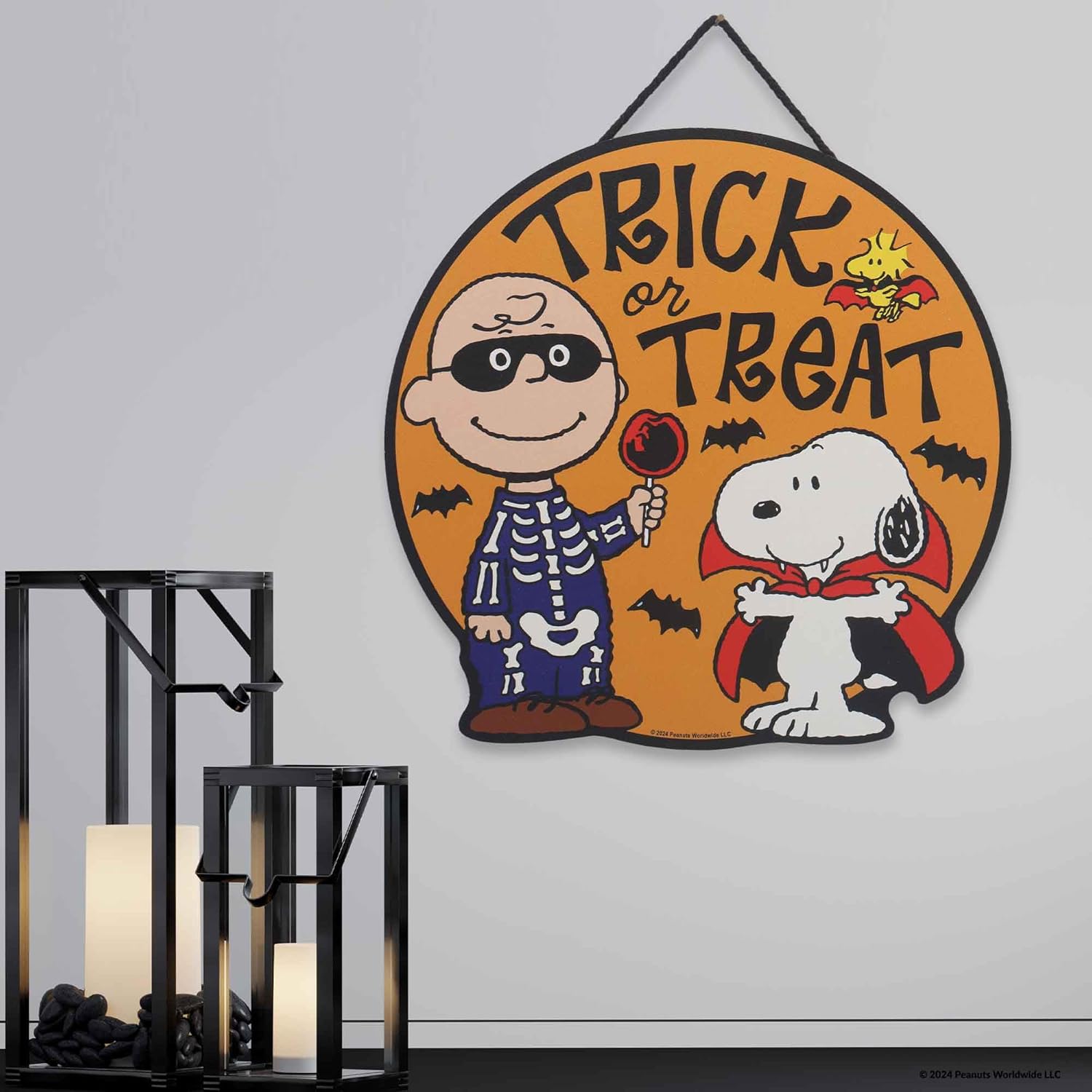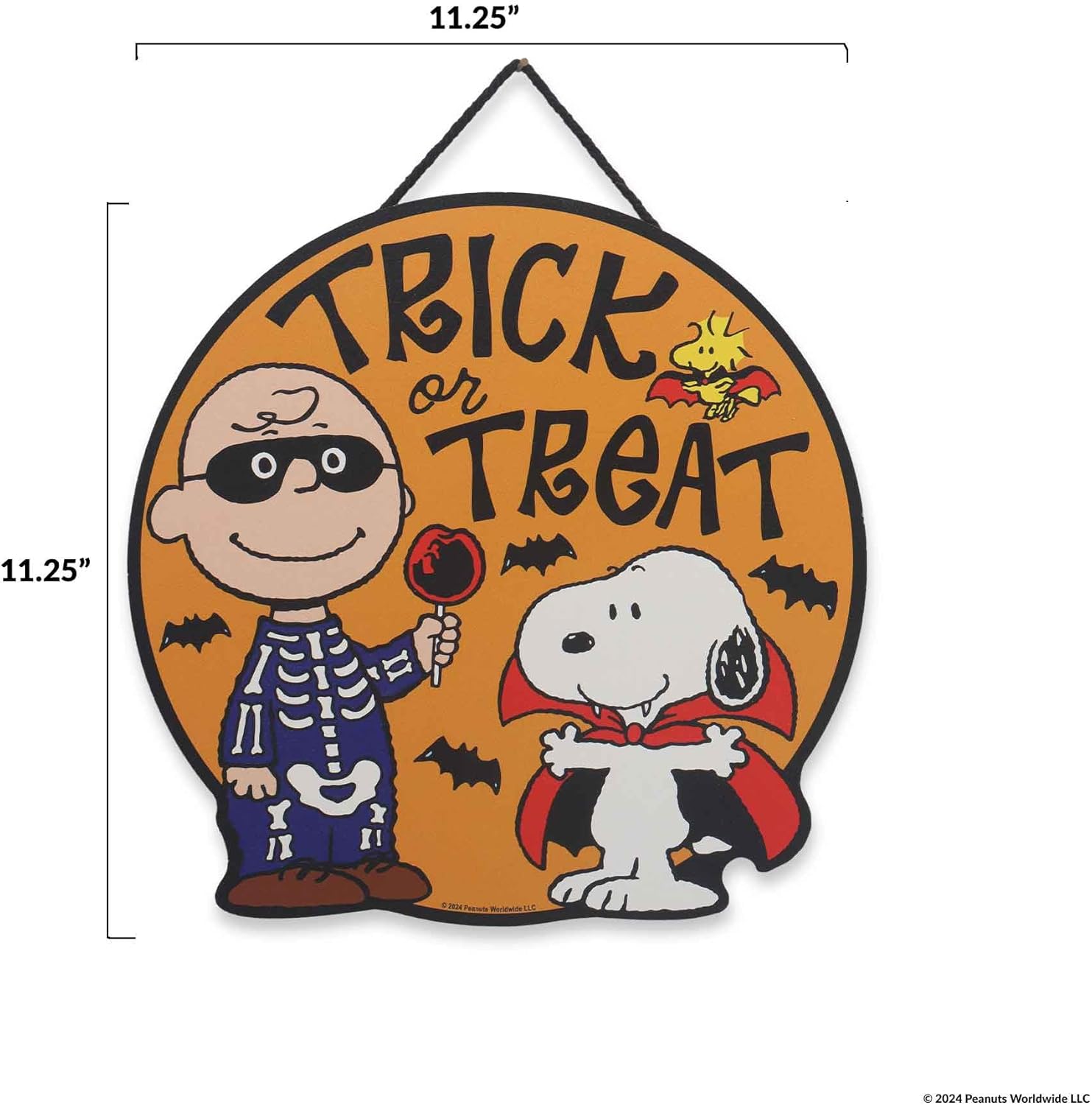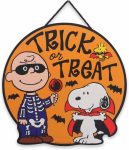
Peanuts Charlie Brown and Snoopy Trick Review Charlie Brown Halloween – Oemiu
Peanuts’ Timeless Charm: A Deep Dive into “It’s the Great Pumpkin, Charlie Brown”
Few television specials capture the essence of childhood quite like “It’s the Great Pumpkin, Charlie Brown.” More than just a Halloween cartoon, it’s a cultural touchstone, a nostalgic journey back to simpler times filled with innocent anxieties, unwavering belief, and the inevitable sting of disappointment. For generations, families have gathered around their screens to witness Charlie Brown’s perpetual bad luck, Linus’s steadfast faith in the Great Pumpkin, and Snoopy’s hilarious antics as the World War I Flying Ace. But what makes this particular Peanuts adventure so enduring? What underlying themes resonate so deeply, year after year, making it a Halloween tradition unlike any other? The magic lies in its relatable characters, its simple yet profound narrative, and its ability to tap into the universal experiences of hope, disappointment, and the importance of friendship.
Unwrapping the Orange: A Story of Belief and Disillusionment
At its core, “It’s the Great Pumpkin, Charlie Brown” is a story about belief, specifically Linus van Pelt’s unwavering belief in the Great Pumpkin. While his friends embark on the usual Halloween rituals of trick-or-treating and costume parties, Linus dedicates his night to patiently awaiting the arrival of this benevolent pumpkin deity in the most sincere pumpkin patch he can find. This commitment is unwavering, despite ridicule from his sister, Lucy, and the general skepticism of his peers. He writes letters to the Great Pumpkin, detailing their plans, and attempts to convince others of its existence. Linus embodies the pure, unadulterated faith of a child, a faith that is both admirable and, ultimately, heartbreaking. This starkly contrasts with the more secular pursuit of candy and costumes, representing the tension between belief and reality that often emerges as children grow older. The anticipation builds throughout the special as Linus passionately proclaims the Great Pumpkin’s imminent arrival, only to be met with disappointment and exhaustion, falling asleep in the pumpkin patch. He’s eventually found by Sally, who, having been promised that she would meet the Great Pumpkin with Linus, feels betrayed and resentful, adding another layer of emotional complexity to the narrative. This theme of disillusionment, of having one’s beliefs challenged by reality, is a powerful and relatable experience for children, and adults alike.
The exploration of belief extends beyond Linus’s dedication. The other children participate in trick-or-treating, a ritual based on the belief that dressing up in costumes and asking for candy will yield positive results. Even Charlie Brown, despite his habitual misfortunes, approaches Halloween with a sense of optimism, hoping for at least one successful trick-or-treating experience. This shared belief in the traditions of Halloween connects the characters, even as Linus stands apart in his devotion to the Great Pumpkin. The contrast between these different forms of belief highlights the diverse ways in which people find meaning and purpose, whether through religious faith, cultural traditions, or personal convictions. The special doesn’t explicitly condemn or endorse any particular belief system, but rather presents them as different facets of the human experience, each with its own potential for fulfillment and disappointment. The enduring appeal of “It’s the Great Pumpkin, Charlie Brown” as one of the best Halloween shows for kids is in part because it asks us to examine our own beliefs and to reflect on the importance of faith, hope, and resilience in the face of adversity.
Charlie Brown’s Costumes and Candy: Navigating the Perils of Halloween
While Linus grapples with his profound belief in the Great Pumpkin, Charlie Brown faces the more mundane, yet equally challenging, realities of Halloween. His costume, a simple ghost outfit with too many holes, becomes a symbol of his perpetual bad luck. As he goes trick-or-treating, he is repeatedly greeted with the dreaded phrase, “I got a rock.” This phrase, repeated throughout the special, becomes a comical yet poignant representation of Charlie Brown’s consistent failures and disappointments. Unlike his friends, who are showered with candy, Charlie Brown receives nothing but rocks, further solidifying his status as the perennial loser. However, even in the face of such misfortune, Charlie Brown maintains a surprising degree of resilience. He doesn’t give up on Halloween entirely, instead, he focuses on the enjoyment of being with his friends, even if his own experiences are less than ideal. This ability to find joy in the midst of adversity is a testament to Charlie Brown’s enduring character and a valuable lesson for viewers of all ages. He exemplifies a certain kind of acceptance, and demonstrates that even when things go wrong, there is still value in the simple act of participation and camaraderie.
The other children’s experiences on Halloween night offer a contrasting perspective to Charlie Brown’s misfortunes. They gleefully collect candy, dance at Violet’s party, and generally enjoy the festivities of the holiday. However, even their experiences are not without their own minor setbacks. Sally, promised a meeting with the Great Pumpkin, is left feeling betrayed and resentful when Linus’s vigil proves fruitless. Peppermint Patty mistakes Charlie Brown’s ghost costume for a real person, leading to a series of humorous misunderstandings. These smaller disappointments remind us that even in the midst of celebration, life is not always perfect. The special masterfully balances the joys and frustrations of Halloween, creating a realistic and relatable portrayal of childhood experiences. The candy symbolizes the fleeting rewards and pleasures of life, while the rocks represent the inevitable disappointments and setbacks. Charlie Brown’s experience, receiving only rocks while others collect candy, offers a potent metaphor for life’s inherent inequalities and the random distribution of fortune. His ability to persevere despite his bad luck is a key element in the special’s lasting appeal and offers a valuable lesson in resilience, making “It’s the Great Pumpkin, Charlie Brown” a memorable Halloween TV special year after year.
Snoopy’s High-Flying Antics: Comedy and Escapism in the Trenches
Amidst the themes of belief and disappointment, Snoopy provides a welcome dose of levity and escapism. His recurring fantasy as the World War I Flying Ace offers a comical counterpoint to the more serious storylines of Linus and Charlie Brown. Dressed in his aviator goggles and scarf, Snoopy engages in imaginary battles with the Red Baron, soaring through the night sky on his doghouse airplane. These sequences are filled with slapstick humor and imaginative visuals, providing a brief respite from the emotional complexities of the main narrative. Snoopy’s alter ego allows him to transcend the limitations of his everyday life and to become a hero in his own mind. This escapism resonates with viewers who often seek refuge in fantasy and imagination to cope with the challenges of reality. While Linus and Charlie Brown are grounded in the real world, grappling with their own personal struggles, Snoopy is free to soar above it all, engaging in playful adventures and demonstrating the power of imagination. Snoopy’s role is crucial in maintaining the overall tone of the special, preventing it from becoming overly sentimental or melancholic.
Furthermore, Snoopy’s interactions with the other characters add another layer of humor to the special. His attempts to dance with Pig-Pen at Violet’s party are hilariously awkward, and his demands for root beer from Charlie Brown while “under enemy fire” are delightfully absurd. These interactions showcase Snoopy’s unique personality and his ability to bring joy and laughter to those around him. Even when he is not engaged in his Flying Ace fantasy, Snoopy’s presence adds a touch of whimsy and playfulness to the narrative. The character of Snoopy the World War I Flying Ace also acts as a clever device for satire. By placing Snoopy in this exaggerated historical context, the special gently pokes fun at the conventions of war movies and the romanticized image of heroism. This satirical element adds another layer of depth to the special, making it appealing to both children and adults. Snoopy’s escapades offer a counter-narrative to the more serious themes of the special, reminding us that even in the face of adversity, there is always room for laughter and imagination. The blend of humor and heart is a key ingredient in the enduring appeal of “It’s the Great Pumpkin, Charlie Brown” and solidifies its place as a Halloween staple. Finding that perfect blend, makes it a favorite kids Halloween show.
Comparing Charlie Brown Halloween Specials: The Great Pumpkin vs. Others
While “It’s the Great Pumpkin, Charlie Brown” is arguably the most iconic of the Peanuts Halloween specials, it’s worth comparing it to others in the franchise to understand its unique qualities. There haven’t been many other dedicated Halloween Peanuts TV specials, but “It’s Magic, Charlie Brown” (1981) contains Halloween elements. This special features Marcie learning magic and Peppermint Patty wanting to impress Charlie Brown. While “It’s Magic” touches upon the themes of illusion and trickery associated with Halloween, it lacks the profound thematic depth and emotional resonance of “The Great Pumpkin.” “The Great Pumpkin” focuses on core themes of belief, disillusionment, and the importance of friendship. The special also contains the memorable visual imagery and iconic moments that have made it a perennial favorite. The other Halloween-adjacent specials tend to be less focused and lack the same level of emotional impact. “It’s the Great Pumpkin, Charlie Brown” remains the definitive Peanuts Halloween experience, a unique blend of humor, heart, and insightful commentary on childhood experiences.
The distinctiveness of “It’s the Great Pumpkin, Charlie Brown” is also evident in its lasting cultural impact. It has been referenced and parodied in numerous television shows, movies, and other forms of media. The phrase “I got a rock” has become a shorthand for disappointment and misfortune, while Linus’s unwavering faith in the Great Pumpkin is often used to illustrate the power of belief. The special has also inspired countless Halloween decorations, costumes, and other merchandise. This enduring cultural presence speaks to the special’s profound impact on popular culture and its ability to resonate with audiences across generations. “It’s the Great Pumpkin, Charlie Brown” is more than just a Halloween cartoon; it’s a cultural phenomenon. Its timeless themes, memorable characters, and iconic moments have made it a cherished part of the Halloween season for millions of people around the world, solidifying its place as the best Halloween TV shows on offer.
| Feature | “It’s the Great Pumpkin, Charlie Brown” | “It’s Magic, Charlie Brown” |
|---|---|---|
| Focus | Belief, Disillusionment, Friendship | Magic, Illusion, Unrequited Love |
| Iconic Moments | Linus in the pumpkin patch, Charlie Brown getting rocks, Snoopy as the Flying Ace | Marcie learning magic, Peppermint Patty’s infatuation |
| Thematic Depth | Profound, explores universal themes of faith and disappointment | Lighter, focuses on more superficial themes |
| Cultural Impact | Significant, widely referenced and parodied | Limited, less well-known and less impactful |
FAQ
What is the main message of “It’s the Great Pumpkin, Charlie Brown”?
The main message of “It’s the Great Pumpkin, Charlie Brown” is multifaceted, revolving around the themes of belief, disappointment, and the importance of friendship. The special explores the power of faith through Linus’s unwavering belief in the Great Pumpkin, contrasting it with the more conventional traditions of Halloween. It also acknowledges the inevitable disappointments of life, as seen in Charlie Brown’s constant misfortune and Linus’s unfulfilled expectations. Ultimately, the special emphasizes the importance of friendship and support, highlighting how the characters come together to help each other through their disappointments and celebrate their shared experiences. It subtly emphasizes resilience and the capacity to find joy even when things don’t go as planned.
Why does Charlie Brown always get rocks when trick-or-treating?
Charlie Brown’s receiving rocks instead of candy is a recurring joke in the special, but it also serves a symbolic purpose. It represents his perpetual bad luck and his status as the perennial loser. The rocks symbolize the disappointments and setbacks that he frequently encounters in his life. Unlike his friends who are rewarded with candy, Charlie Brown is consistently denied the joys and pleasures of Halloween. This reinforces his character as an underdog and highlights the theme of inequality. However, even in the face of such misfortune, Charlie Brown maintains a sense of optimism and resilience. This ultimately serves to highlight his good nature and emphasize the idea that despite negative experiences, friendship and the simple pleasures in life are more important than any tangible reward.
What does the Great Pumpkin represent?
The Great Pumpkin represents faith and belief, particularly the unwavering faith of a child. It’s a symbol of hope and the desire to believe in something bigger than oneself. For Linus, the Great Pumpkin is a real and benevolent entity who will reward those who are sincere and devoted. However, the Great Pumpkin also represents the potential for disappointment and the challenges of maintaining faith in the face of reality. The fact that the Great Pumpkin never actually appears highlights the limitations of blind faith and the need to reconcile belief with experience. It also can be seen as a parody of traditional religious beliefs, questioning the validity of faith without empirical evidence.
Is “It’s the Great Pumpkin, Charlie Brown” a religious special?
While the special touches upon themes of belief and faith, it is not explicitly religious. The Great Pumpkin is not presented as a traditional religious figure, but rather as a more secular symbol of hope and the power of belief. The special doesn’t promote any particular religious doctrine or criticize any specific religious beliefs. Instead, it uses the Great Pumpkin as a metaphor for the broader human desire to believe in something meaningful. The special can be interpreted as a gentle critique of blind faith, but it ultimately respects the importance of belief in people’s lives, regardless of the object of that belief. The themes are universal and accessible to viewers of all backgrounds, without being religiously exclusive.
What makes Snoopy’s Flying Ace scenes so funny?
Snoopy’s Flying Ace scenes are funny for several reasons. The juxtaposition of a beagle pretending to be a World War I flying ace is inherently absurd and comical. Snoopy’s commitment to his fantasy, complete with aviator goggles and scarf, adds to the humor. The scenes are filled with slapstick humor and exaggerated sound effects, creating a visually and aurally entertaining experience. Furthermore, Snoopy’s interactions with the other characters while he is in character are often hilarious, as they are forced to play along with his fantasy. The segments are well animated and paced, which helps keep the humor light and entertaining. Ultimately, these scenes offer a welcome dose of levity and escapism, providing a fun and silly counterpoint to the more serious themes of the special, as it shows Peanuts Charlie Brown Halloween and Snoopy in the same show.
Why is “It’s the Great Pumpkin, Charlie Brown” considered a classic?
“It’s the Great Pumpkin, Charlie Brown” is considered a classic due to a confluence of factors: its timeless themes, relatable characters, and enduring cultural impact. The special explores universal themes of belief, disappointment, friendship, and resilience, which resonate with viewers of all ages. The characters, particularly Charlie Brown, Linus, and Snoopy, are iconic and beloved, and their interactions are both humorous and heartwarming. The special has been broadcast annually for decades, becoming a cherished tradition for families. Its memorable scenes, such as Linus in the pumpkin patch and Charlie Brown getting rocks, have become deeply ingrained in popular culture. This longevity and resonance, coupled with its high-quality animation and storytelling, have solidified its status as a Halloween classic.
What are some of the life lessons we can learn from “It’s the Great Pumpkin, Charlie Brown”?
Several valuable life lessons can be gleaned from “It’s the Great Pumpkin, Charlie Brown.” One lesson is the importance of having faith and believing in something, even if it seems improbable to others. Linus’s unwavering belief in the Great Pumpkin demonstrates the power of hope and conviction. Another lesson is the importance of resilience in the face of disappointment. Charlie Brown’s perpetual bad luck teaches us that setbacks are inevitable, but they don’t have to define us. The special also highlights the importance of friendship and supporting each other through difficult times. Finally, the special teaches us to find joy in the simple things and to appreciate the value of companionship, even when things don’t go as planned. Even as “It’s the Great Pumpkin, Charlie Brown” continues to be enjoyed by audiences, there is much for children and adults to take away from it.
